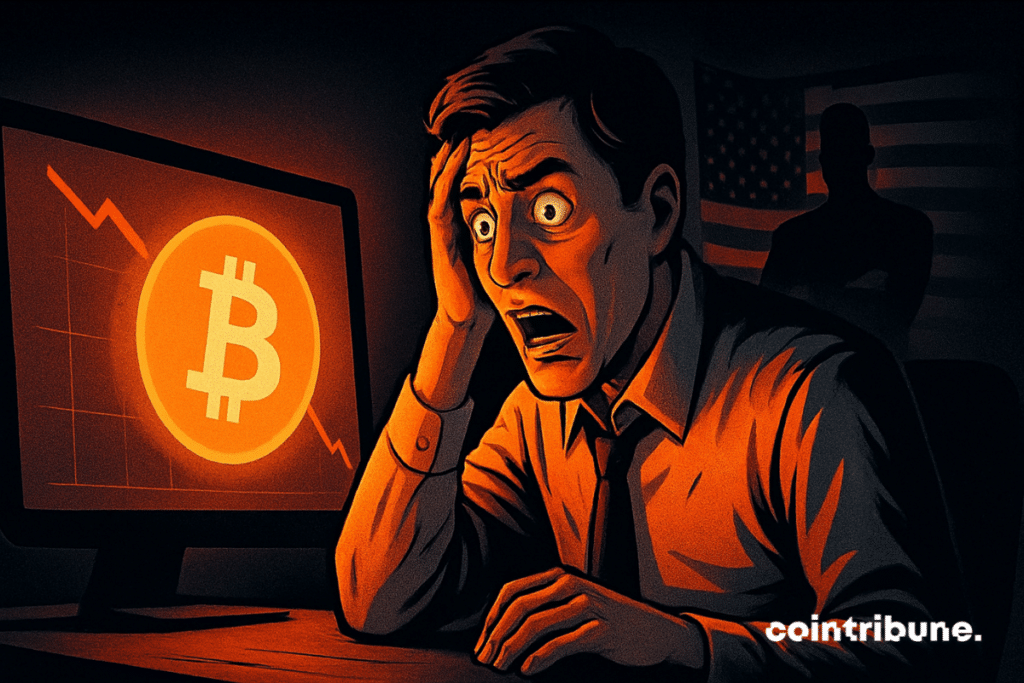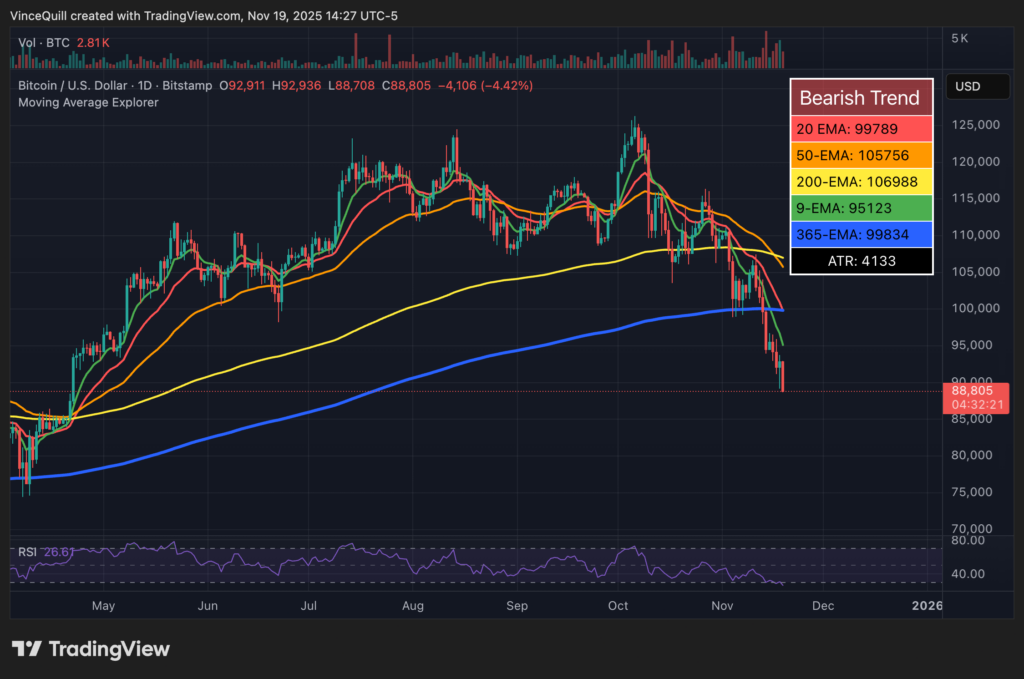Bitcoin: The chances of a rate cut in December fall to 33%
Caution settles in on the markets. In a few weeks, investors have seen their hopes for monetary easing vanish while Bitcoin lost its momentum. But does this correction signal a simple pullback or the start of a real bear market?

En bref
- The chances of a Federal Reserve rate cut in December have fallen to 33%, down from 67% at the beginning of November.
- Bitcoin has lost key support at $90,000 and now shows a “death cross” on its technical chart.
- The crypto fear and greed index is stagnating at 16, signaling “extreme fear” among investors.
- Analysts anticipate a possible decline in BTC to $75,000 before a potential rebound at the end of 2025.
The Fed changes course and sows doubt on the markets
The situation has radically changed in a few weeks. Mid-November, the market still anticipated a 67% chance of a 25 basis point cut at the December FOMC meeting.
Today, this likelihood has collapsed to only 33% according to data from the Chicago Mercantile Exchange. A sharp reversal explained by the cautious statements of Jerome Powell and the unexpected resistance of inflation.
Forecast platforms like Kalshi and Polymarket show slightly more optimistic figures — respectively 70% and 67% — but the general trend remains the same. Operators doubt. Inflation is not weakening as fast as expected, and the Fed might maintain its restrictive policy longer than anticipated.
This monetary hesitation severely hits the crypto market. Digital assets, considered particularly sensitive to liquidity conditions, suffer directly from this tightening of expectations.
“The Fed stimulates the economy in a bubble context“, recently warned Ray Dalio, pointing out the risks of a poorly calibrated policy facing historically high asset prices.
For Bitcoin investors, the message is clear: no monetary catalyst is to be expected in the short term. The October rate cut was already priced in without causing a significant rebound. The now uncertain December cut can no longer serve as a lifeline.
Bitcoin falters, alarming technical signals and sentiment at its lowest
The Bitcoin price tells a worrying story. Since Wednesday, the leading crypto has lost the psychological threshold of $90,000 and now trades around $89,000. More worrying still, BTC has traded below its 365-day moving average for six consecutive days, a support level usually considered critical.
Technical indicators accumulate in the red. The 50-day exponential moving average has just crossed below the 200-day, forming a “death cross.”

This classic bearish signal suggests a likely continuation of the correction. Benjamin Cowen, a respected analyst in the sector, sums up the situation:
If the cycle is not over, Bitcoin could rebound as early as next week. Otherwise, expect another drop before a rally to $75,000.
Investor sentiment confirms this deleterious atmosphere. The “Crypto Fear & Greed” index stagnates at 16 out of 100, translating generalized “extreme fear.” This level is barely one point above the previously recorded annual low. Bitcoin ETFs recorded $1.1 billion in net outflows, a sign that even institutional investors now prioritize caution.
The crypto market is entering a zone of prolonged turbulence. Without immediate monetary support and with deteriorated technical indicators, Bitcoin could continue consolidating in the coming weeks. The most pessimistic already talk about a possible “mini bear market,” while optimists bet on a rebound by the end of 2025. One certainty remains: uncertainty reigns supreme.
Maximize your Cointribune experience with our "Read to Earn" program! For every article you read, earn points and access exclusive rewards. Sign up now and start earning benefits.
Passionné par le Bitcoin, j'aime explorer les méandres de la blockchain et des cryptos et je partage mes découvertes avec la communauté. Mon rêve est de vivre dans un monde où la vie privée et la liberté financière sont garanties pour tous, et je crois fermement que Bitcoin est l'outil qui peut rendre cela possible.
The views, thoughts, and opinions expressed in this article belong solely to the author, and should not be taken as investment advice. Do your own research before taking any investment decisions.